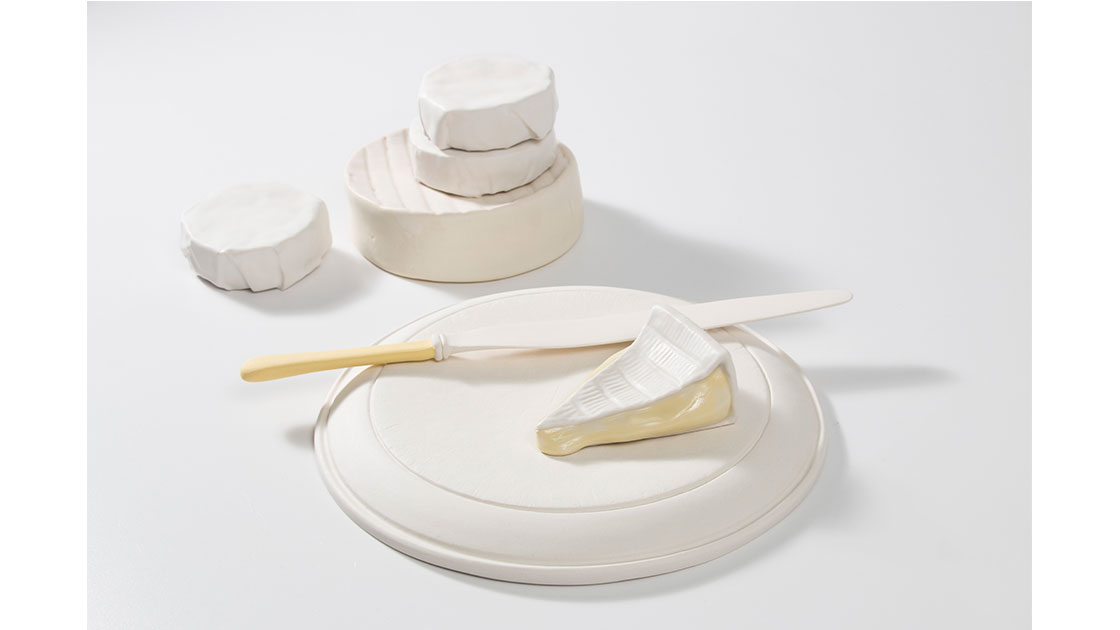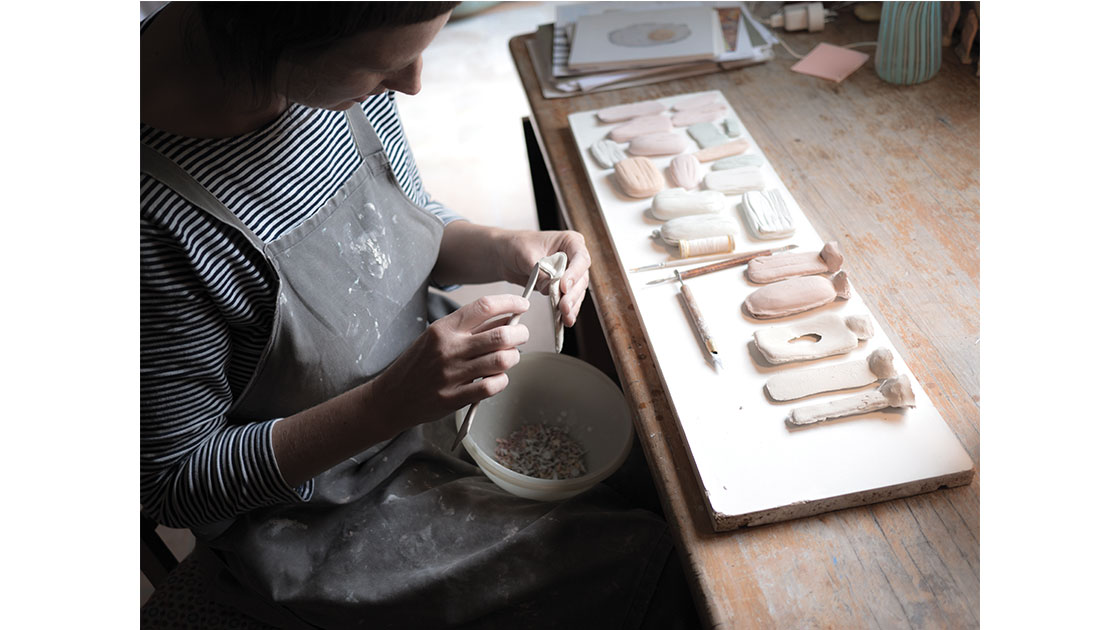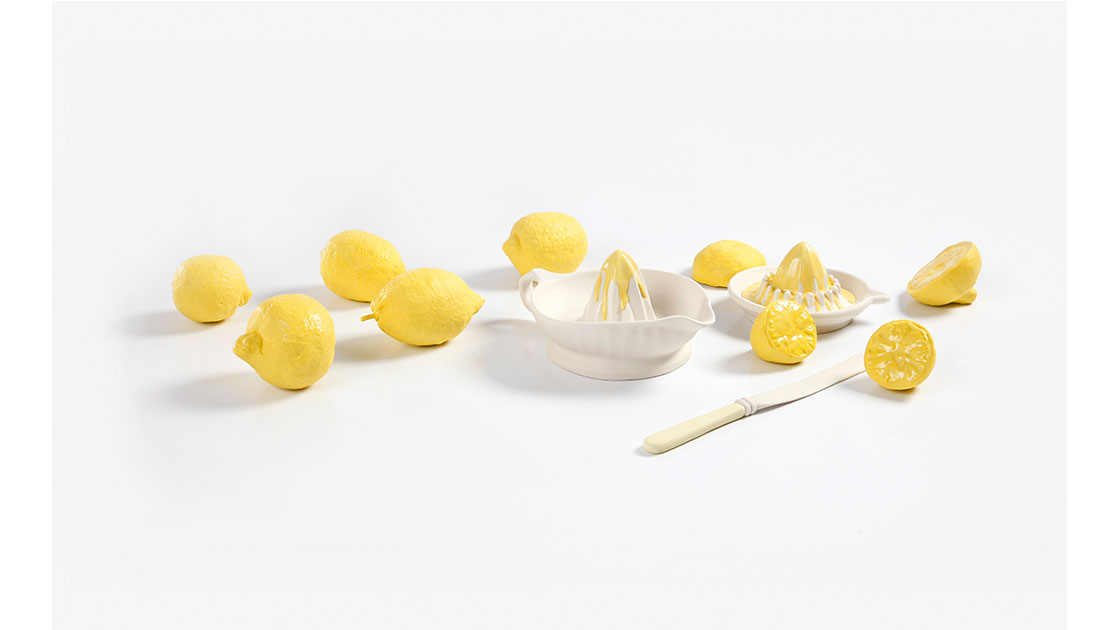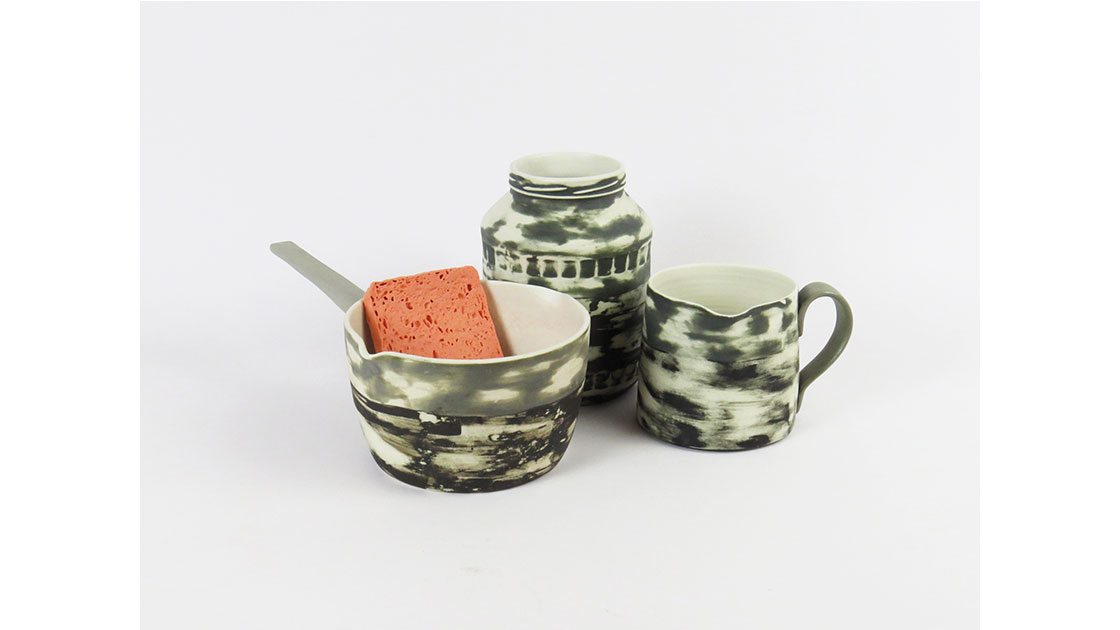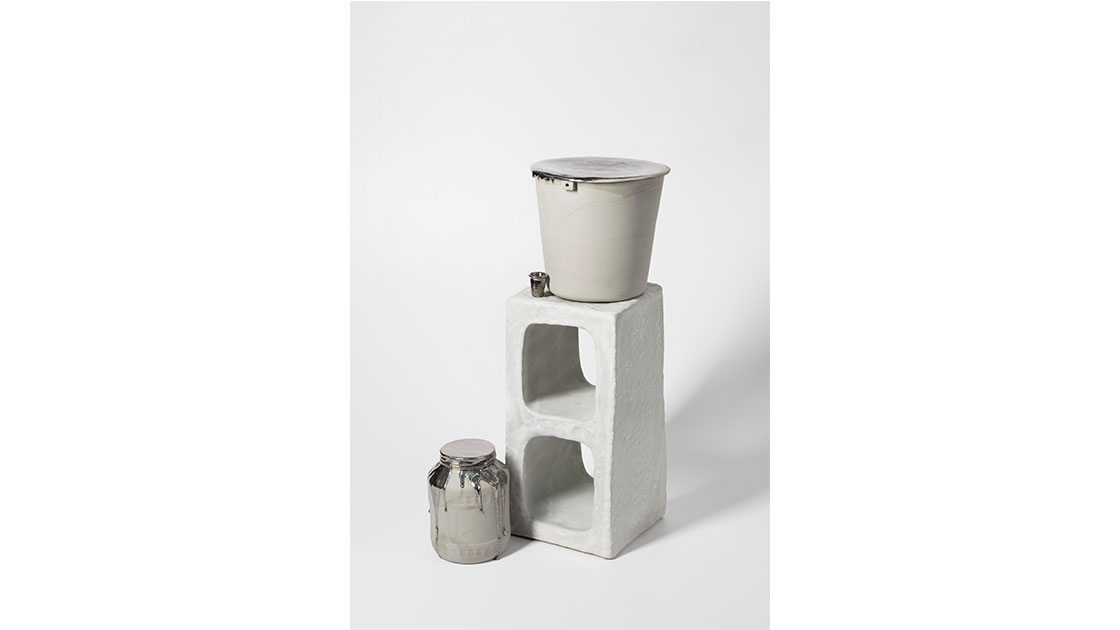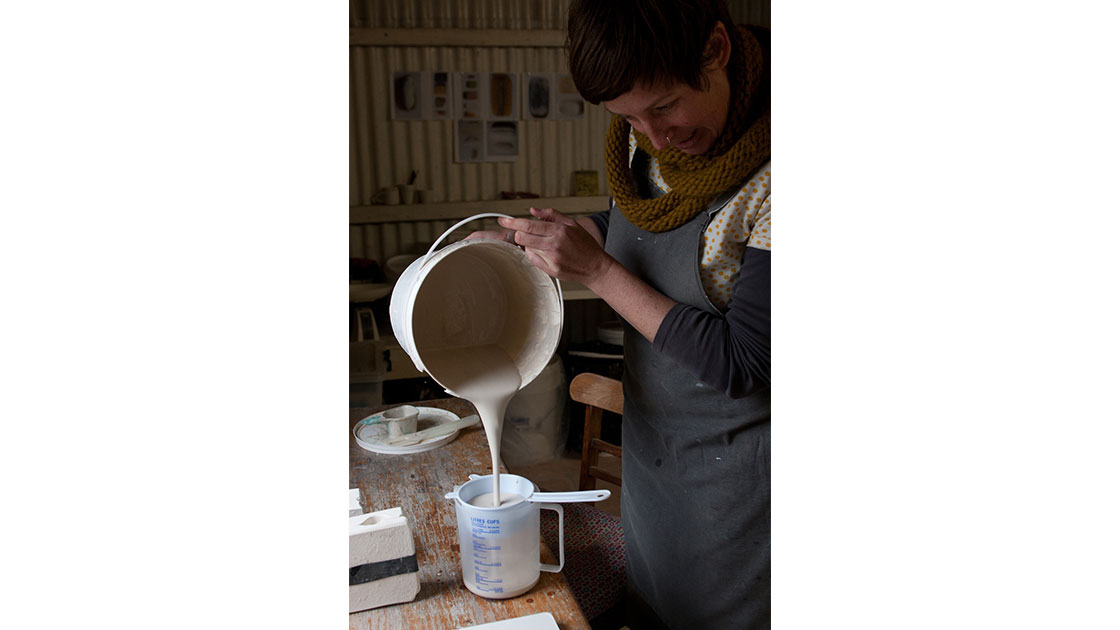Honor Freeman
Honor Freeman’s porcelain-cast interpretations of inconspicuous and well-worn domestic objects narrate the rhythm of daily life’s minutiae, tracing time passing and what it leaves in its wake. Fulvia Mantelli chatted to Freeman about her practice in Issue 42.
MY FIRST ENCOUNTER WITH HONOR FREEMAN’S work was her onoffon series (2002-2009) of replica light switches and power points that playfully subverted shared spaces in Adelaide’s West End. They went on to grace discreet nooks from regional interstate cities to South America. Other interventions have included porcelain bread tags and door handles. They were largely about putting something intimate and private out into the public; like tiny gifts, a wink and a nod for those that notice the unnoticed.
Many were blackened by repetitive ‘use’.
It was just delightful! Maybe it brought those people back to their body of thinking of actions they do subconsciously so many times in a day.
Honor’s still-life installations also rephrase small routine actions to challenge our assumptions.
In distilling the residue of our interactions with banal objects, they elevate the daily humdrum of our existence. It all comes back to ideas of decay and preservation, all wrapped up in ideas of still-life; objects themselves becoming the still-lives, lifted from the kitchen. Everyone likes to remember the big things, but they’re not what make up the days.
Her earliest still-life series of cast Tupperware containers (2003-2008), remain an important body of work that still resonates for her.
I was playing with the materiality of plastic and porcelain, and researched the history of Brownie Wise and Earl Tupper. I was reflecting on still-life artists like Gwyn Hanssen Pigott; also the mess of life in the cupboard of Tupperware and plastic, and throwaway culture. More recently they’ve been layered with feminist ideas, in terms of Tupperware parties and what they created in the ’50s, for women to have the opportunity to independently make a living – I enjoy those overtones and the nostalgia.
While the current spotlight is on the raw and visceral in contemporary ceramics, Honor’s practice relishes the experimental and alchemic nature of the medium’s materiality.
I readily admit that I’m a bit of a control freak across the rest of my life, but in ceramics there’s this kind of surrender: you put it in the kiln and relinquish that control, your heart’s in your throat at times. It keeps you humble. I love that magical transformation of material: from humble earth that’s everywhere and has been around for ages, then add fire and you’ve got ceramics! And the quality of porcelain itself injects that object with something else that’s indescribable.
Her cast sponges and eroded soaps (2005-ongoing) convey sensory qualities – in both their making process and our engagement with them.
The soaps sound like pebbles, and I love those relationships with the water; they go against the body and they wear away. They’re scentless but people can still attach a scent to them; this is hilarious, at Sydney Contemporary, I heard someone say ‘oh soaps! can you smell that!!’. There’s that nice play on the idea of familiarity and the power of memory and association.
She refers to her works as ‘ghost objects’.
They’re a memory of the original, like a tangible whisper or echo of that object, eternally preserved but subtly changed. The casting process is my poetic way of describing how I feel about them.
Honor revels in the relationship between “repetitive knowledge and repetitive crafting”, and the nature of ceramic processes to honour time and champion repetition.
Slip-casting is essentially an industrial production process, but it often includes handmade processes, especially the soaps; they come out of the moulds really gnarly, and I spend a great deal of time remembering and reapplying all the cracks, sanding them, going back and putting the dirt marks through them, then sanding again post-firing.
Materiality ranks highly in her practice, yet it’s her refreshingly altruistic relationship with ideas that defines its potency. In developing progressive series of works, Honor mines her concepts’ nuances for their multiple narratives.
I keep unpicking them to get more out of them, as long as they still challenge me and pique my curiosity. One work leads into another and they all come about in different ways. Some might be from a line in a song, or a book, or trying to capture that one poetic moment. Quite often the ideas never come to be, I just get that thrill of having considered them. I’ve thought for some time that all these ideas are out there, and when you’re right for them, they’re ready for you.
Honor’s work articulates experiences and memories of her immediate environments. While living in Sydney (2005-2010), a new series of work introduced the modest bucket and funnel.
I was living near a body of water and became more interested in ebbs and flows, and how we’re largely made up of water. There are lots of lovely expressions about how we’re related to the tides, also in our emotional sense. Buckets hang around in the studio, which is often how these objects find their way into my work, and they also happen to fit perfectly in my kiln. All that these humble, functional, hardworking objects evoke: they catch the leaks, the leaking bucket, the overflowing, and that beautiful Bob Dylan song ‘buckets of rain, buckets of tears, got all them buckets comin’ out of my ears.’
Conversely, while living in Tennant Creek (2010-2012) she was seduced by the big skies, sweeping clouds and the omnipresent “beautiful fine layer of dust”.
The Every Cloud has a Silver Lining and Collecting the Dust series were Honor’s ‘small way of remembering the desert’. Lots of grey forms overflowing with silver linings. Ideas about measuring water levels, and trying to gather and preserve the silver lining. It’s kind of a pun, but I like how that looked materially and the ideas of hope or optimism; there’s also a bit of melancholy about them. And the word ‘dusting’ is an action of cleaning up as well as laying out. There’s a beautiful poetry of dust, that everyday-ness, you can’t hold it back.
Honor’s practice is often discussed as poetic, in process, form and word-play. She renders seasoned adages into playful yet poignant puns.
All of those old expressions that I’ve grown up surrounded by, I love what they suggest, and it takes the work out of being too serious. I’m always talking in unfinished sentences, grasping for the right words. I’d like to think my works are doing what words cannot. It’s like trying to describe smell or sound – which are instant transporters, time machine kind of stuff.
Honor’s upbringing continues to underpin her practice.
I come from working class roots, no airs and graces; dad was a truckie, mum a nurse. My family have always crafted and worked in a hardworking physical labour way, which is how I grew up understanding the world.
Her most recent series of hand built forms draws on the ‘hardworking’ Besser block.
While I’m still exploring mimicry, it’s an other challenge in size and a different way of building and thinking. It’s lovely to have my hands on the clay at those various stages; slip casting isn’t the same as actually having your hands in the mud. The Besser blocks are slab constructed, textured by drumming my fingers on the slab. The best way I can describe what I’m still reaching for with them is ‘wedding fondant’, that gorgeous way it wraps around, like beautifying this grey block. As a single stand-alone object would be nice. So perhaps that’s next.



